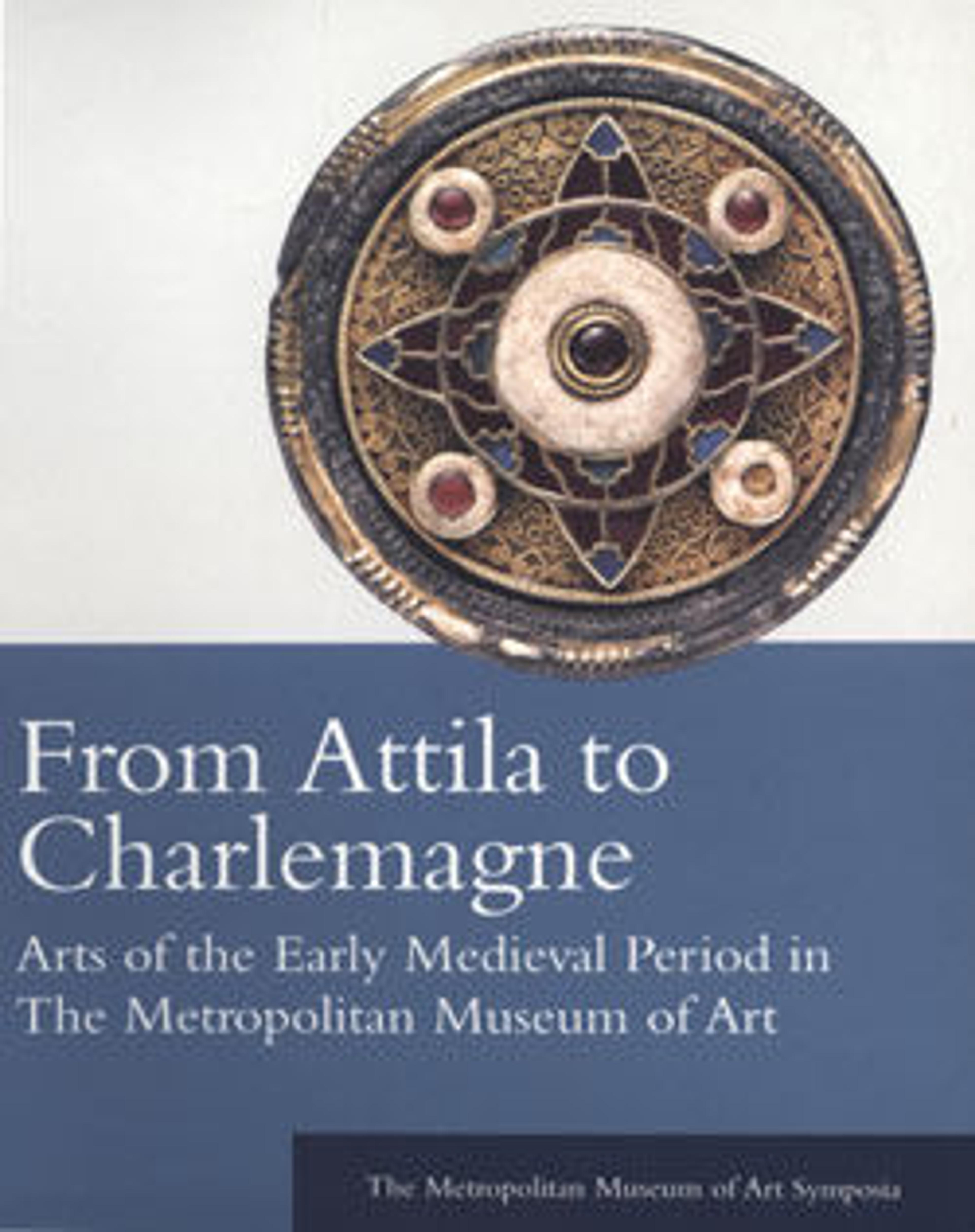Collar Pendant
This pendant, which would have originally been strung closely with perhaps nine others to form a flat, collar-like necklace, comes from the grave of a sixth-century Ostrogothic woman in Domagnano, Italy. It was discovered by a farmer in 1892, and subsequently sold off to several different collectors. All the pieces from the find exhibit the same characteristics: almost pure gold, into which various cloisonné fillings are set—such as pearl, colored paste, lapis lazuli, and of course garnets like the ones shown here.
The importance of this piece, apart from its beauty, lies in the fact that it proves not only the presence of the Goths in northern Italy around the year 500, but also some degree of settlement there by them—to the extent of burying their dead in the area.
The importance of this piece, apart from its beauty, lies in the fact that it proves not only the presence of the Goths in northern Italy around the year 500, but also some degree of settlement there by them—to the extent of burying their dead in the area.
Artwork Details
- Title:Collar Pendant
- Date:late 5th–early 6th century
- Culture:Ostrogothic
- Medium:Gold - sheet; cells - garnets (patterned foil), glass (green); wire - beaded. Suspension Loops: gold - rod.
- Dimensions:Overall: 1 3/4 x 9/16 x 1/4 in. (4.4 x 1.4 x 0.7 cm)
- Classification:Metalwork-Gold
- Credit Line:Gift of J. Pierpont Morgan, 1917
- Object Number:17.190.698
- Curatorial Department: Medieval Art and The Cloisters
More Artwork
Research Resources
The Met provides unparalleled resources for research and welcomes an international community of students and scholars. The Met's Open Access API is where creators and researchers can connect to the The Met collection. Open Access data and public domain images are available for unrestricted commercial and noncommercial use without permission or fee.
To request images under copyright and other restrictions, please use this Image Request form.
Feedback
We continue to research and examine historical and cultural context for objects in The Met collection. If you have comments or questions about this object record, please contact us using the form below. The Museum looks forward to receiving your comments.
